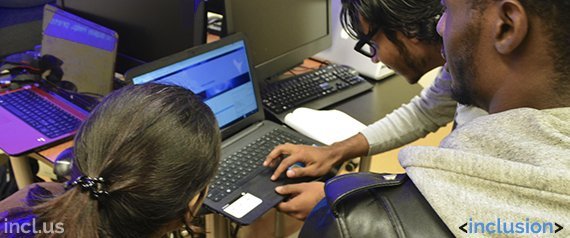Congratulations! You've got your cause, and now you're ready to start your for-purpose organization. Here are some of the lessons I've learned from building my organization, Inclusion. We are a for-purpose organization dedicated to providing digital literacy skills for free to underserved communities. For those of you who aren't familiar with the the for-purpose model, this new organizational model, introduced by Adam Braun, blurs the line between a for-profit and a non-profit business.

(1) What problem are you solving?
This seems obvious, but it is important to think deeply about what problem you're solving. It took roughly four years of deep, meditative thinking for me to find a problem that is both worth solving, and that I'm 99.999% the best in the world at solving. Ultimately, I wanted to solve the gap of the digital divide and empower people with the possibilities of the information economy; this naturally lead to the formulation of a cause.
(2) Be passionate about your cause.
This is overstated, but very necessary. Passion is what will get you through the roller coaster ride of this new unfolding journey. The cause will be your driving force that will guide you, while the passion for your cause will be the fuel to get you there. Being passionate about your cause will make you magnetic to the people and circumstances necessary for its execution.
(3) Choose the right people.
It's critical to get the right people on the bus who share the same passion you do for your cause. Don't waste your time pursuing people who simply aren't interested in your mission. The right people will actively be reaching out to help in any way they can; spend your time nurturing these relationships. Attend every meeting you can and actively ask for introductions. You never know when you will meet your next team member.
(4) Choose the right organizational model.
It's important to think critically about what problem you're solving so you can select the right organizational model. You will spend hours researching each model, but in the end only you will intuitively know if a B Corp or non-profit is the way to go. Trust your intuition on this one.
(5) Think lean.
My background is in startups and technology, so naturally I borrowed from Eric Ries' lean startup methodology. Think like a startup with very limited resources; really think about the 20% driving force that will deliver the 80% of results you're expecting in your organization (the 80-20 rule, also known as the Pareto principle). How can you get the most done and be as effective as possible?
(6) Have an MVP (minimal viable product).
It's easy to get caught up and overwhelmed with achieving your overall, big picture vision. Instead, take a step back and focus on what's in front of you that can be delivered. Your MVP is the minimal viable product, which does exactly this. Not only are you validating your assumptions about your organization, you're also validating your market's assumption. In our case, it was a pilot program we developed to test and validate all our assumptions and see if there was demand for the free coding classes we offered.
(7) Build-out process.
Your MVP will naturally lead to the collection of data which can then be used to develop processes and optimize your full-scale organization. You will eliminate invalid organizational processes and expand on the things that work.
(8) Think about different fundraising models.
Global Poverty Project reinvented the traditional gala by throwing cool, hip concerts instead. Ask yourself: how can you raise money differently on a sustainable basis? This will be one of the major pain points in the lifetime of your organization. Grants, donations, and raising money from foundations are all very time consuming and aren't always a dependable source of long-term funding.
Think about how you can reinvent your existing model, as Pencils Of Promise did when it came to building schools. If you're a B Corp or a for-profit company with a social mandate, look at how Warby Parker went beyond the 2 for 1 model with VisionSpring, which creates a local "glass economy" by training locals rather than just giving away a pair of free glasses.
(9) It will take longer than you expect.
While it's good to have a plan and a timeline, it will almost always take longer than you expect to execute your deliverable. Be patient and ready for this, as meetings get canceled and other obligations come up; be persistent, though, and always follow up.
(10) It's always easy to start -- but how do you build into an organization?
It may be easy to get started and achieve your first few milestones. Where the difficulty lies is growing beyond the first success, and building your organization into a full-on entity that can one day operate even when you are no longer there.
If you have any questions, leave a comment below, tweet @saeedjabbar, or email me at saeed@incl.us
Purpose@Work is a new series of discussions designed to explore how we can infuse a deep sense of purpose into our work - through our organizations, our people, and our impact in society.
How are you taking purpose to the next level in your workplace? Let us know at PurposePlusProfit@huffingtonpost.com or by tweeting with #PurposeAtWork.